Yes, yes, the topic is extremely nerdy. Actually, I didn’t expect there to be any major differences in the layout of ordinary keyboards. Well, far from it. Somehow it was like eating crisps – once you start, you can’t stop. So I dug out all sorts of keyboards from my stash (most of them look like this, soggy – sorry about that).
There are rumours circulating in the scene that the keyboard of the C65 is identical to that of the Amiga 500 on the one hand, and to that of the 128 on the other, or that the keycaps have been bequeathed to it. The A500 has completely different caps, but those of the Commodore C128 look really damn similar. So would C65 owners have spare parts to hand, at least in terms of the keyboard?
First of all: It may be that there are keyboards for the 128 that fit the C65 better or worse. Furthermore, one can argue about the sense and nonsense of this article. The only thing that is certain is that I personally found it interesting to take a closer look. But the world has hardly been waiting for my „research results“ ;-)
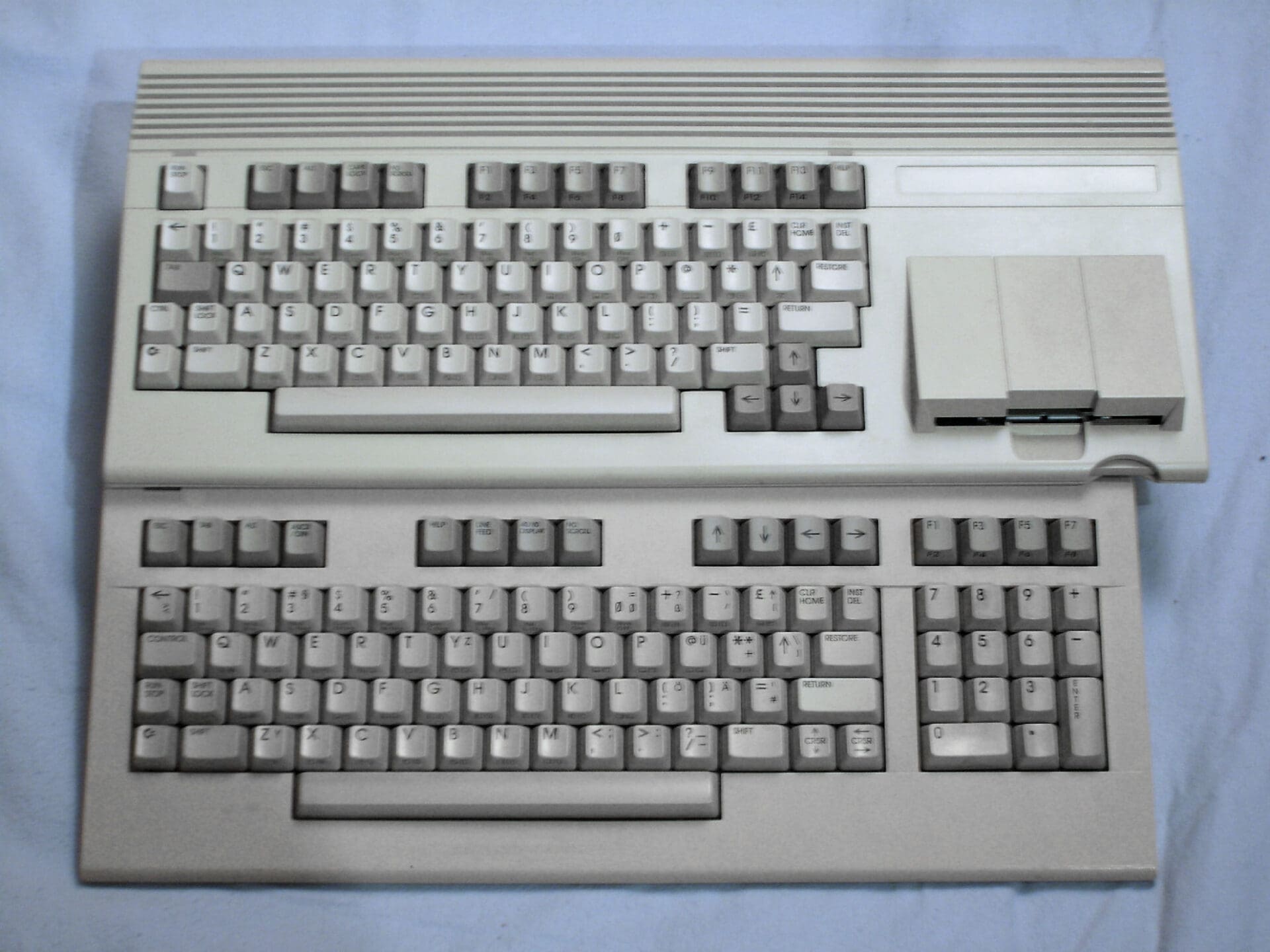
(front: C128, back C65)
To get straight to the point: The answer to this question is a clear „yes“. But let’s take a look at the boxes in detail. The best way is from top to bottom, so let’s start with the F and special keys. At first glance, they are arranged completely differently. At second glance, however, we can say that at least the F-keys of the C128 could be used as spare parts if they are replaced in the block. The character set differs slightly in size. But more on that later.
Hmmm, I’ll say goodbye to people with ISDN and „farmer DSL“ at this point, because what follows is a violent orgy of images.
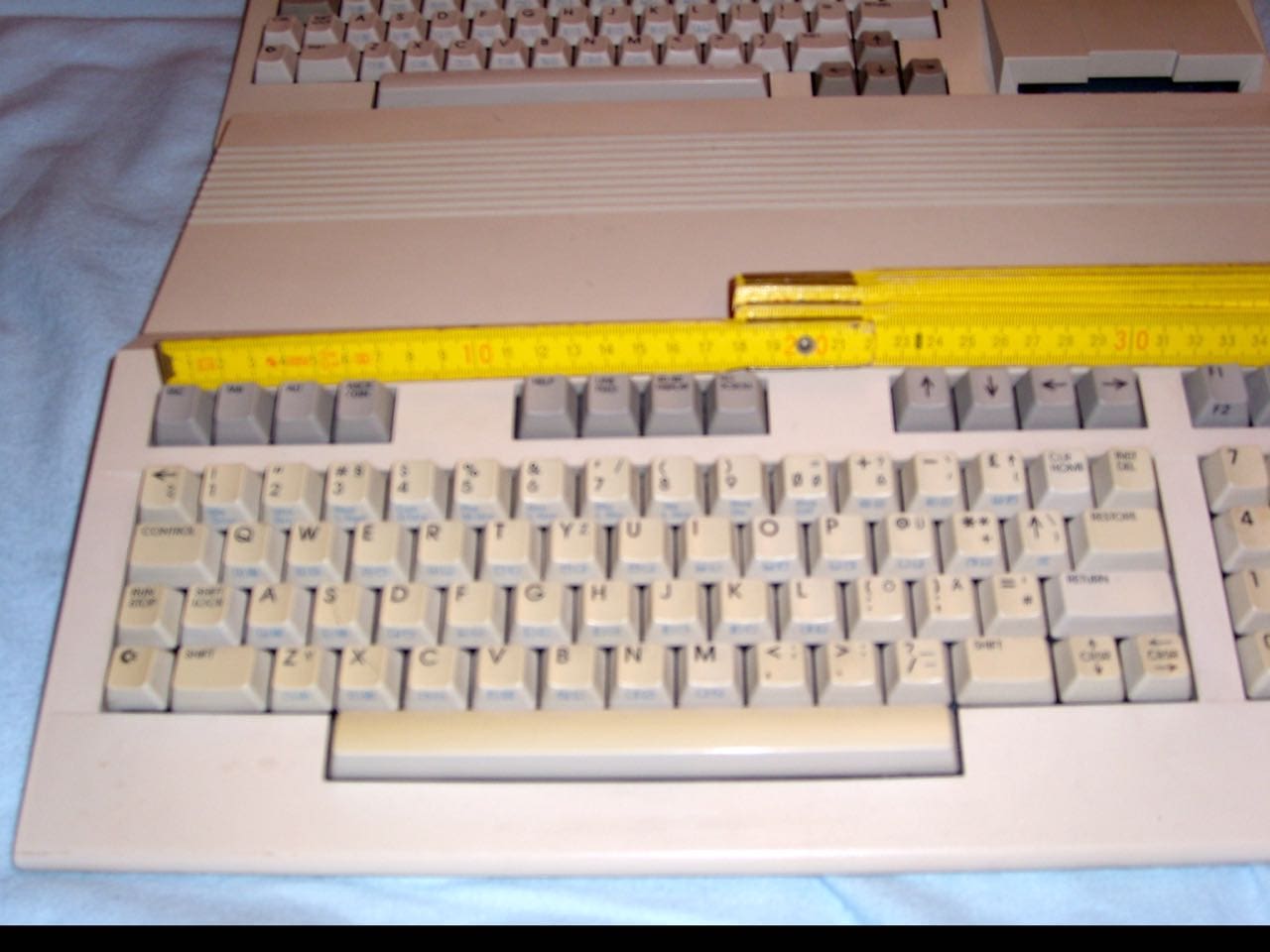
(We take the measure of the C128)
The folding rule is intended to illustrate how far the layout of the two computers differs.
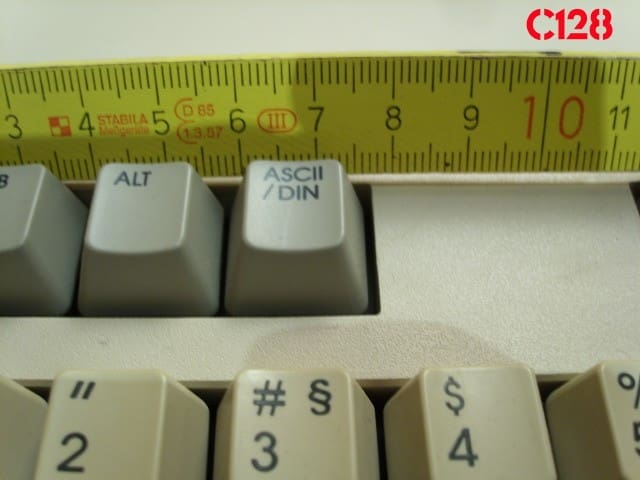
(C128: The character set switch (7.7 cm) is located above the „3“)
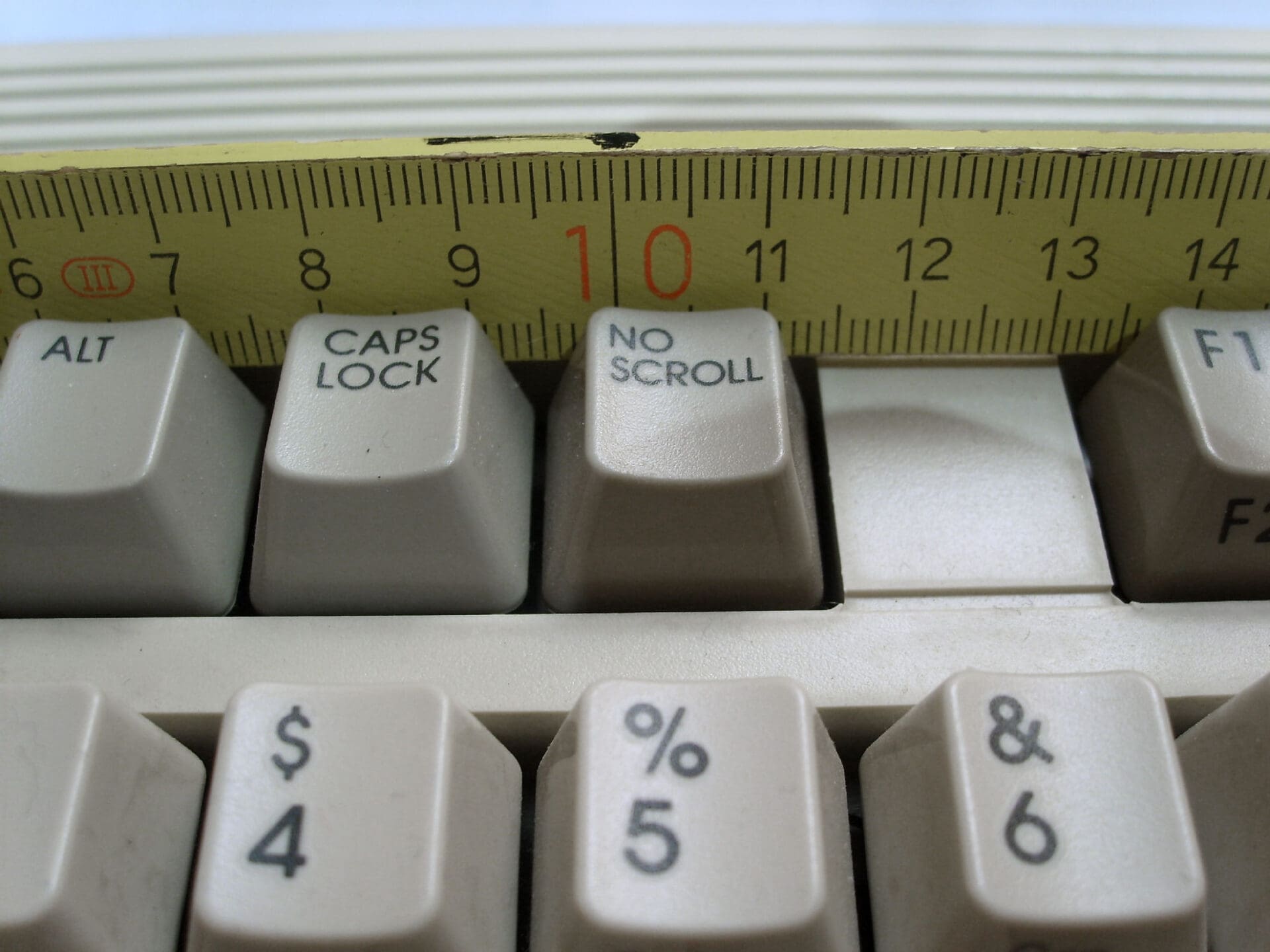
(C65: Caps-Lock sits above the „4“, the first row ends after 11.3cm)
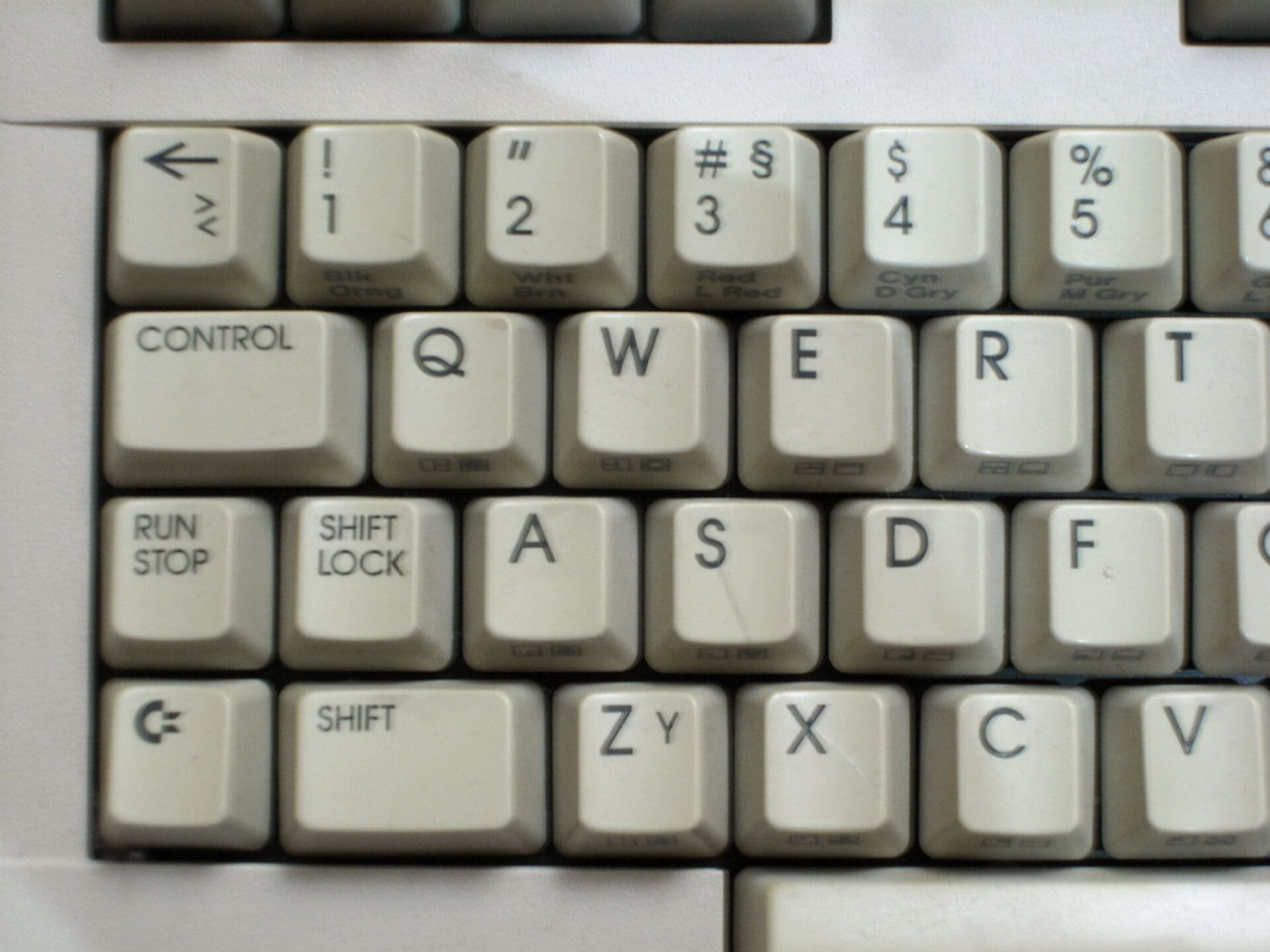
(C128: Rectangular section of the keyboard on the left side)
On the C128 we can see that the keyboard ends absolutely straight on the left. All keys end almost exactly in the centre of the key that is one row further down.
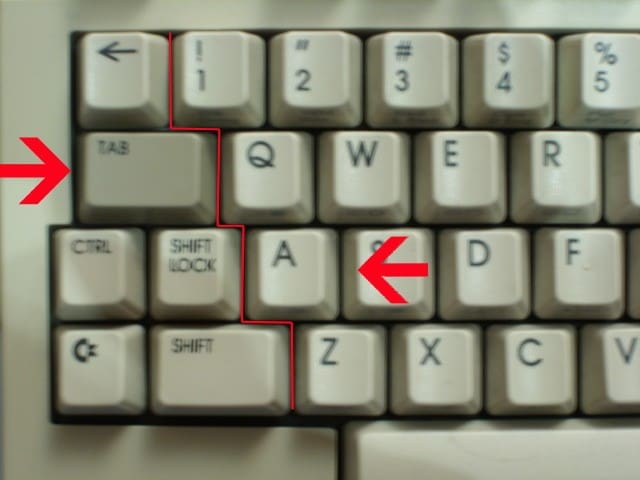
(C65: offset layout)
The C65 has a different layout: The keyboard is more or less split down the middle, above the Caps Lock key and slightly offset from each other. The keys of the second row do not end in the centre of the keys further down, but at about 2/3rds. The arrows illustrate the shift. The red line has a relatively long horizontal alignment in the first row, which is significantly shorter in the second row and then assumes the same length as in the first row in the third row. Yes, that reads stupidly, hence the picture.

(C128: symmetrical keyboard)
Here is the right side of the keyboard again: The symmetry of the 128 layout is retained across all rows of the keyboard.
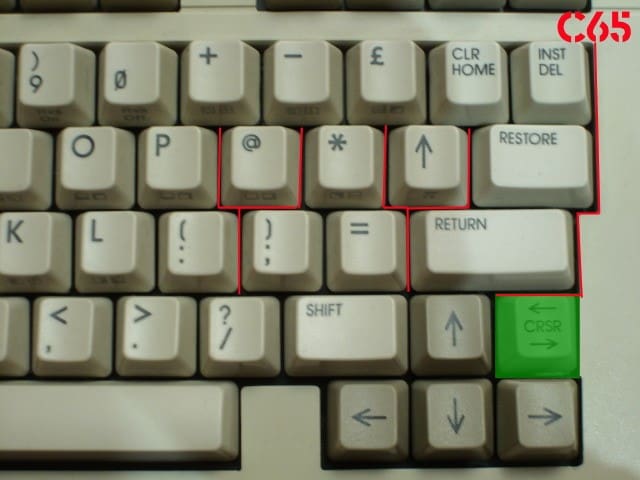
(C65: green key has been copied from the C128)
On the right-hand side of the C65, you could be forgiven for thinking that the layout was completely different, it is so jagged on this side. Again the red line to illustrate the course. I copied the green key from the C128 so that you can see the marginal difference. Above, the „spider monkey“ and the „arrow pointing upwards“: Here again the shifted arrangement of the keys becomes clear.
In other words, the Z,X,C,V keys are exactly in line with the W,E,R,T keys. As the keys on a classic mechanical typewriter can never be directly below each other (not even separated by a line), we can see that the C128 has a „wrong“ keyboard. A comparison with other keyboards follows at the end of this article.

(C128: The space bar is slightly further to the right than on the C65)
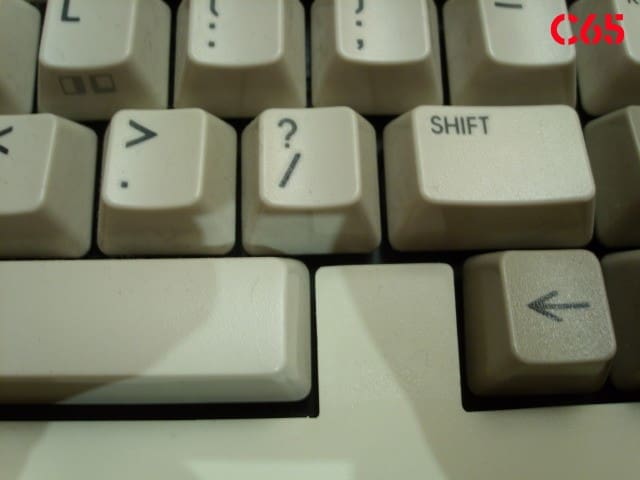
(C65: space bar offset to the left)
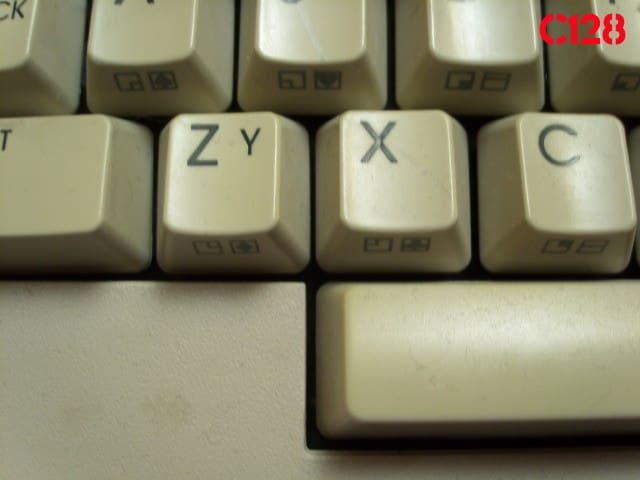
(No standard: space bar too far to the right on the 128)

(As it should be: C65 keyboard)
Is it possible to clip the arrow keys on the Cusorblock from the 128 to the C65? So, with a heavy heart, I removed one of these keys from the C65:
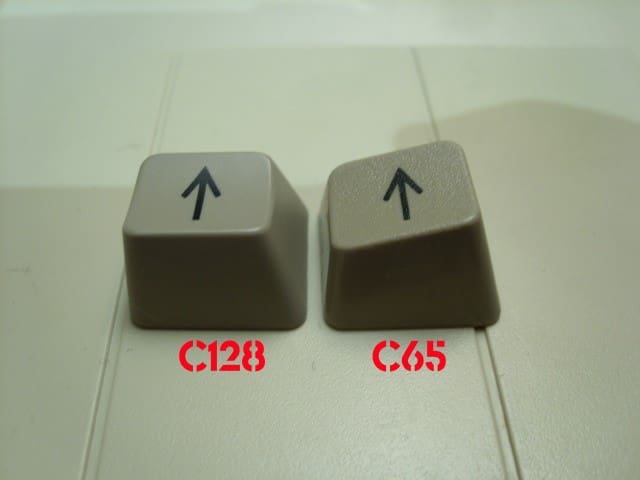
(difference)
You can’t do that at all, or only by using a Dremel, but even then the angles of the flanks don’t really fit. Apart from that, the retaining pin on the inside is of course at the wrong angle.
But… do at least the remaining caps of the C128 fit mechanically on the C65? Tricky!
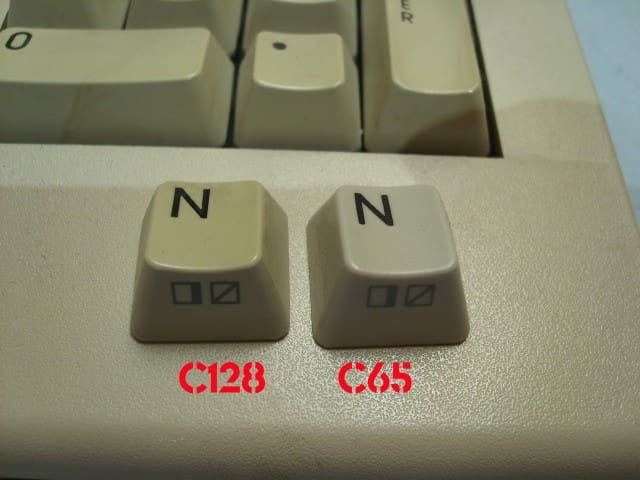
(Looks good: identical caps!)
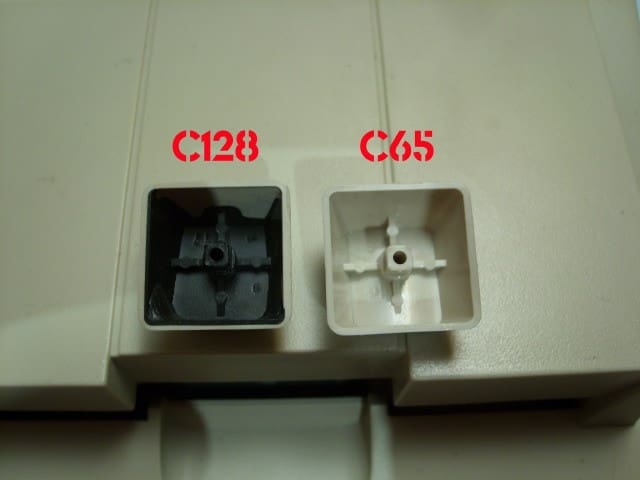
(Elaborate C128 caps, but also look like those of the C65 from below)
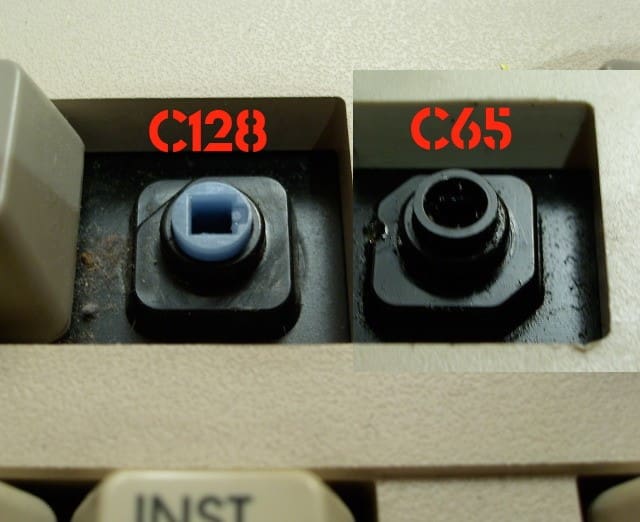
(Not the same: keycaps)
Yes, it looks disgusting, I know. The grease on the C65 keyboard is due to the fact that the right arrow key sometimes sticks when pressed. Well, in the picture I can only now see a small hollow on the left side. Is that the reason? I’ll have to check when I get the chance…
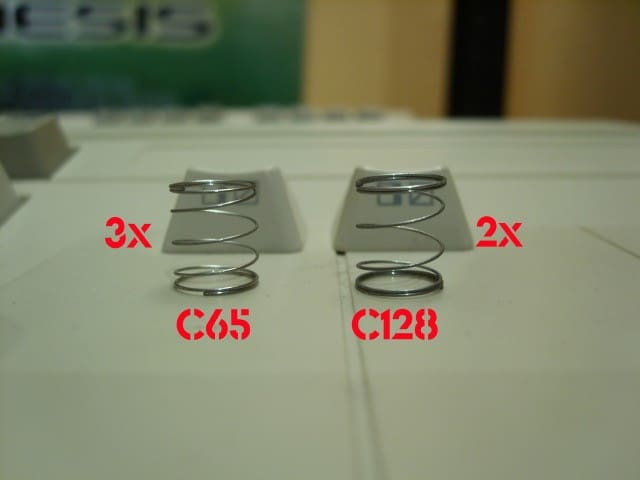
(different springs)
The typing feel differs slightly between the two computers. The C65 types almost like a modern keyboard, it certainly has a much lighter touch than the 128. While we’re at it: Most PC keyboards only have rubber instead of springs. You can tell from this that the two computers are from a different era.
But let’s move on: Can we discover any other differences between the two Commodore computers in the keyboard area?
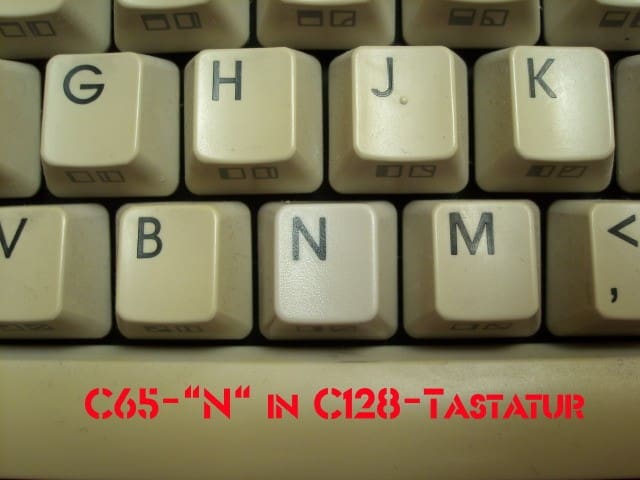
(below: The labelling of the caps on the C128)
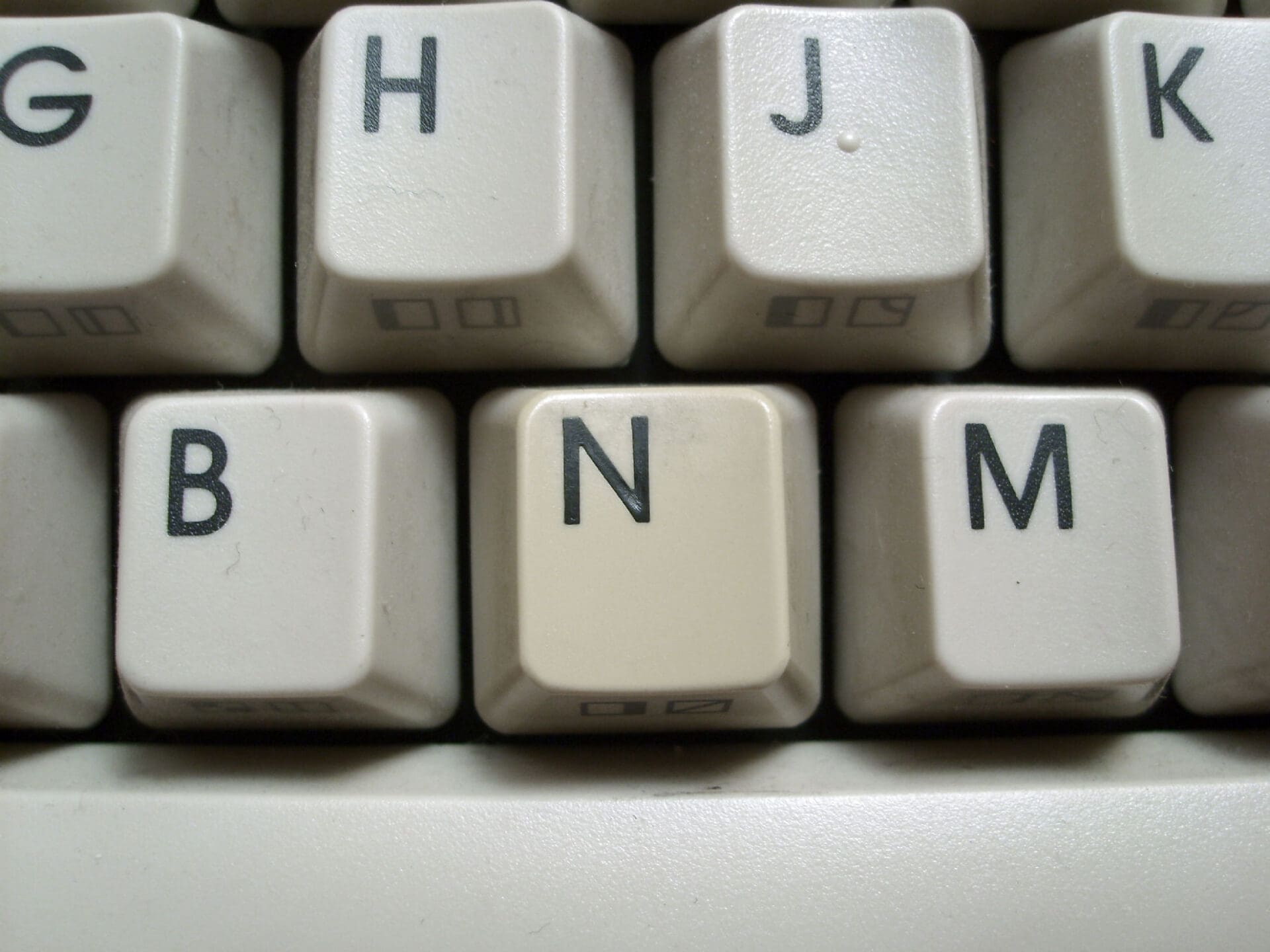
(The C128 „N“ in the C65 keyboard)
OK, the labelling of the C128 keys is a little higher up on the keycap, but you could live with that. What’s worse is that although the C65 cap fits well in the 128, a C128 cap is not flush with the C65 keys:
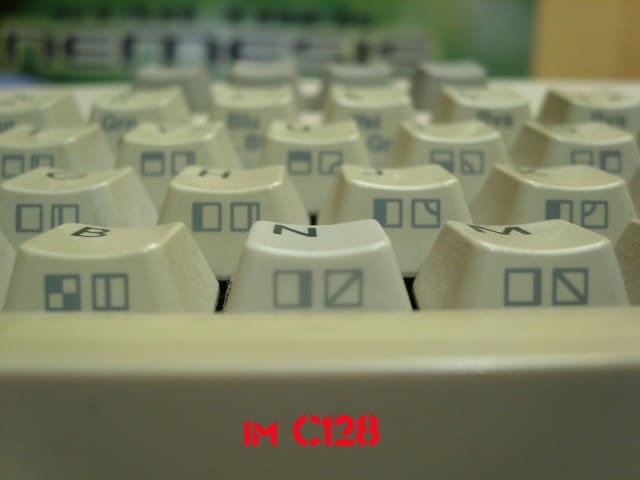
(Fits: C65 key in 128 keyboard)
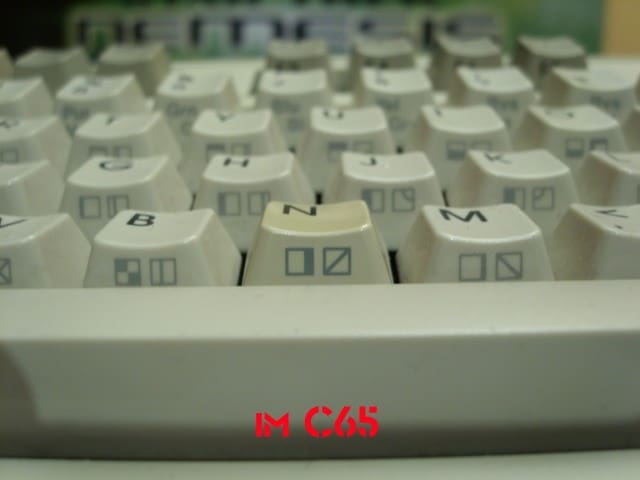
(Does not fit: C128 key in the C65)
The cap does not engage as firmly as in the 128 and is still a little higher than an original key even after very firm pressure.
Conclusion: If you want to convert a C128 keyboard for a C65 clone and want to solve the problems with the special and cursor keys, then a C128 keyboard is ideal. If you want to use replacement caps from the 128, you will have to do some tinkering, as these protrude significantly above the other keys. In addition, the print of the CBM-typical special characters on the C65 is somewhat lighter than on the C128. Well, it looks better than a missing original cap.
But while we’re on the subject of layout: Was this offset between the third and fourth row „normal“ on the C128 or the C65? From today’s perspective, the answer is clear: the 128 does not have a standard layout!
I’ve done everything on the left here, but apart from the Plus/4 and the G7000 membrane keyboard, I couldn’t find any device that also has this strange arrangement of keys.
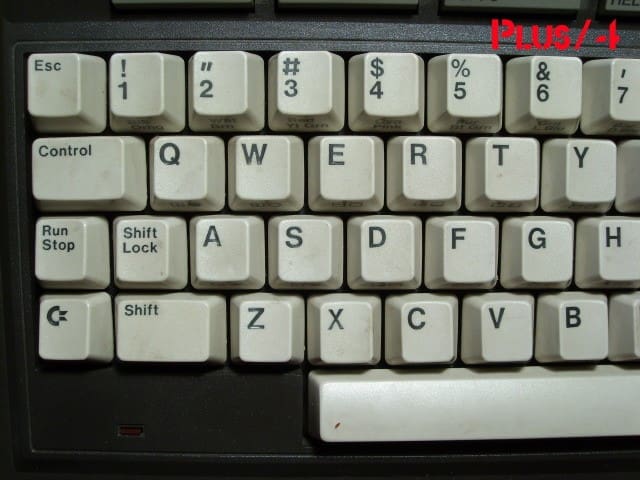
(Commodore Plus/4)
And here are the standard-compliant keyboards:
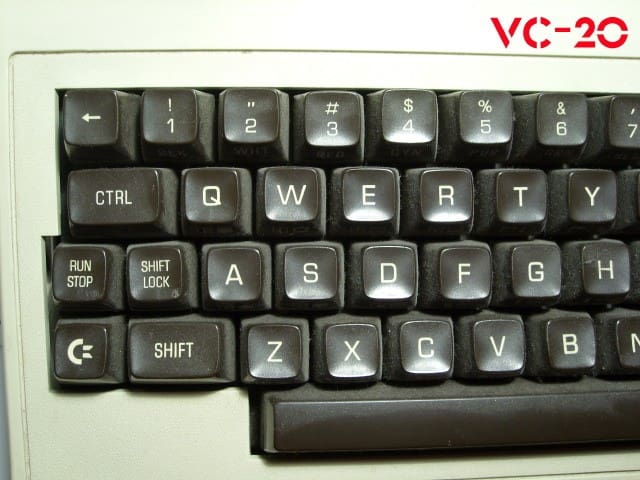
(VIC-20)

(C64)

(Atari 600/800XL)

(CPC 664)
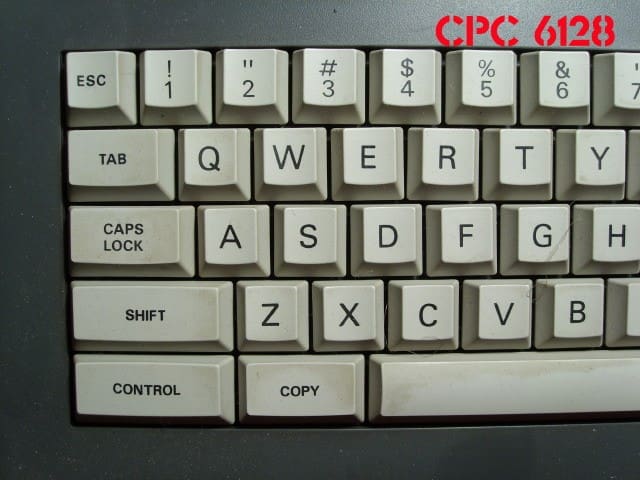
(CPC 6128)
Layouts still current today:
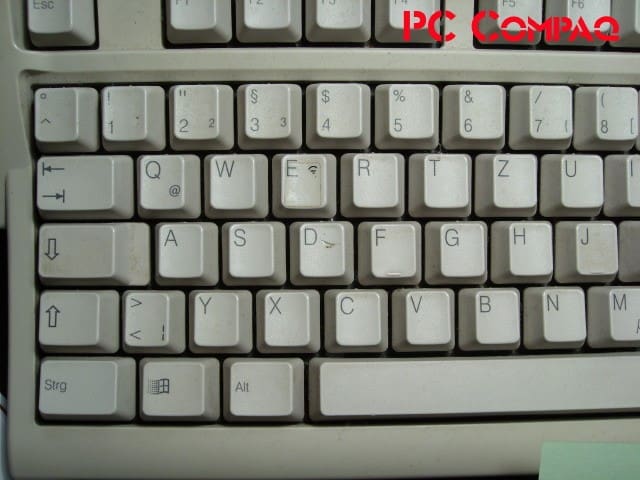
(Compaq)
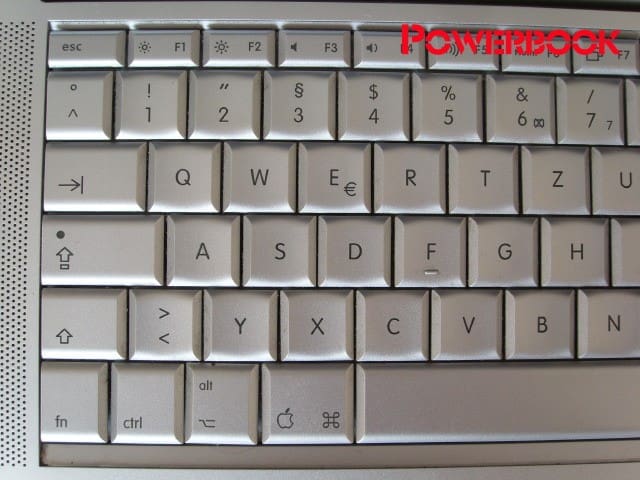
(Apple Powerbook)
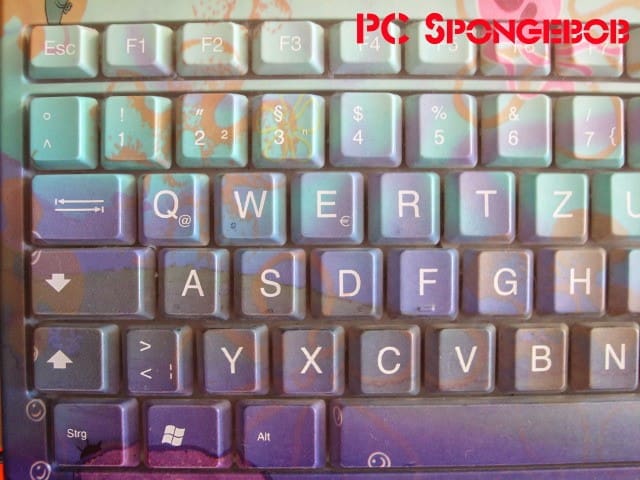
(Spongebob keyboard)
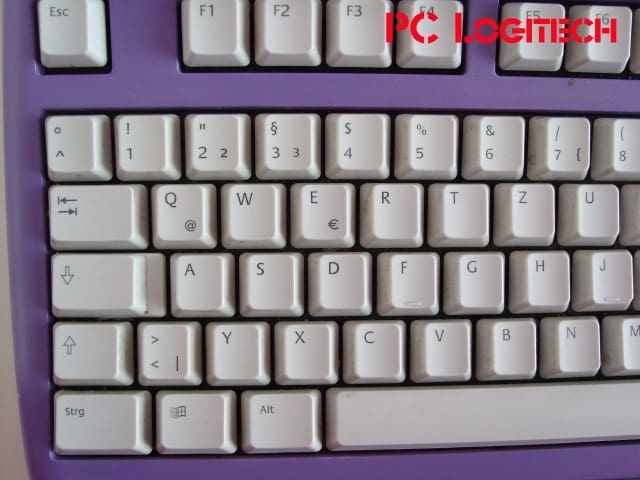
(Logitech)